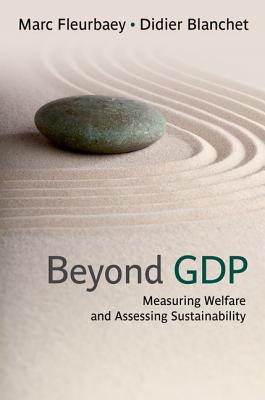图书简介
Is GDP a good proxy for social welfare? Building on economic theory, this book confirms that it is not, but also that most alternatives to it share its basic flaw, i.e., a focus on specific aspects of people’s lives without sufficiently taking account of people’s values and goals. A better approach is possible.
Contents; vii; Preface ix; Introduction: The four musketeers xi; 1 A wealth of indicators 1; 1.1 Introduction; 1.2 A bird’s eye view; 1.3 Aggregating the non-aggregatable?; 1.4 Correcting GDP; 1.5 Sustainability assessment: weak or strong?; 1.6 Coping with multidimensionality: dashboards; 1.7 An overhanging question: how far can aggregation go?; 2 Measuring sustainability; 2.1 Introduction; 2.2 Wealth and sustainable well-being; 2.2.1 Discounting future streams of well-being?; 2.2.2 From intertemporal well-being to sustainable consumption; 2.3 The savings approach: a reference framework; 2.3.1 Shifting the focus to sustainability : why?; 2.3.2 Assessing sustainability in imperfect but predictable economies.; 2.3.3 An example; 2.4 The savings approach: several pending problems; 2.4.1 Monetization in practice; 2.4.2 Behavioral indeterminacy or when ’weak’ indicators can; turn out too strong; 2.4.3 Technological and normative uncertainties; 2.4.4 An additional problem: the cross-national dimension of; unsustainability; 2.5 Conclusion: where to go from there?; iii; iv CONTENTS; 3 A price for everything?; 3.1 A revealed preference argument; 3.1.1 The argument for an individual consumer; 3.1.2 Extending the argument to social welfare through a representative agent; 3.1.3 Extending the argument to social welfare with an opti-; mality assumption; 3.2 A variant of the revealed preference argument; 3.3 The theory of index numbers; 3.3.1 An axiomatic approach; 3.3.2 Approximating welfare changes; 3.4 Decomposing welfare; 3.4.1 A first decomposition, with the social expenditure function; 3.4.2 A second decomposition, in terms of effeciency and equity; 3.4.3 A new decomposition, based on Bergson curves; 3.4.4 Another decomposition, for small variations; 3.5 Specific problems with imputed prices and full income; 3.6 Conclusion; 4 Equivalent income, or how to value what has no price; 4.1 Money-metric utility and equivalent income; 4.2 Knock-out criticism?; 4.2.1 Not welfarist enough; 4.2.2 Too welfarist; 4.2.3 Potentially regressive; 4.2.4 Reference dependent; 4.2.5 Arrow’s coup de grace; 4.3 Fairness to the rescue; 4.3.1 The equivalence approach in fair allocation theory; 4.3.2 Arrow Independence is not compelling; 4.3.3 References need not be arbitrary; 4.3.4 The right dose of welfarism; 4.3.5 Bundle dominance is unacceptable; 4.3.6 Egalitarianism is demanding; 4.4 Social welfare decomposition; 4.5 Conclusion; 5 Is happiness all that matters?; 5.1 The Easterlin paradox: Have we been wrong for 70,000 years?; 5.1.1 Bentham is back; 5.1.2 The debate about subjective welfarism; 5.1.3 Is happiness the ultimate goal?; 5.1.4 The key objection to subjective scores; 5.2 A theory of subjective well-being; 5.2.1 AOects and judgments; 5.2.2 The three problems of the respondent; CONTENTS v; 5.2.3 Heterogeneous and shifting standards; 5.2.4 What do people care about?; 5.2.5 Comparisons across preferences; 5.3 Making use of happiness data; 5.3.1 Proposed indicators; 5.3.2 Putting aOects in their place; 5.3.3 Identi?cation problems; 5.3.4 Can happiness data be improved?; 5.4 Conclusion; 6 Empowering capabilities; 6.1 The capability approach; 6.1.1 From basic needs to capabilities; 6.1.2 Functionings, between ’opulence’ and ’utility’; 6.1.3 From functionings to capabilities; 6.2 Capabilities as opportunities; 6.2.1 Valuing sets; 6.2.2 The relevant aspects of opportunities; 6.2.3 Shaping opportunity sets; 6.2.4 Equality against set valuation; 6.2.5 Why capabilities?; 6.3 The valuation issue; 6.3.1 The intersection approach; 6.3.2 Disagreement and respect for diversity; 6.3.3 Implications of respect for personal preferences; 6.4 Is the CA a separate approach?; Conclusion: How to converge on a multiplicity; Why synthetic indicators?; Shortcuts and pitfalls; Vices and virtues of monetary indicators; A multiplicity of synthetic indicators; Sustainability warnings; A A theory of the reference for equivalent incomes; A.1 The model; A.2 Reference operators; A.3 Non-market goods; A.4 Market prices; A.5 The household problem; B Proofs 233; B.1 A Paretian rank-dependent criterion; B.2 Reference-price independence; B.3 A simple proof of Arrow’s theorem in an economic framework; vi CONTENTS; Bibliography
Trade Policy 买家须知
- 关于产品:
- ● 正版保障:本网站隶属于中国国际图书贸易集团公司,确保所有图书都是100%正版。
- ● 环保纸张:进口图书大多使用的都是环保轻型张,颜色偏黄,重量比较轻。
- ● 毛边版:即书翻页的地方,故意做成了参差不齐的样子,一般为精装版,更具收藏价值。
关于退换货:- 由于预订产品的特殊性,采购订单正式发订后,买方不得无故取消全部或部分产品的订购。
- 由于进口图书的特殊性,发生以下情况的,请直接拒收货物,由快递返回:
- ● 外包装破损/发错货/少发货/图书外观破损/图书配件不全(例如:光盘等)
并请在工作日通过电话400-008-1110联系我们。
- 签收后,如发生以下情况,请在签收后的5个工作日内联系客服办理退换货:
- ● 缺页/错页/错印/脱线
关于发货时间:- 一般情况下:
- ●【现货】 下单后48小时内由北京(库房)发出快递。
- ●【预订】【预售】下单后国外发货,到货时间预计5-8周左右,店铺默认中通快递,如需顺丰快递邮费到付。
- ● 需要开具发票的客户,发货时间可能在上述基础上再延后1-2个工作日(紧急发票需求,请联系010-68433105/3213);
- ● 如遇其他特殊原因,对发货时间有影响的,我们会第一时间在网站公告,敬请留意。
关于到货时间:- 由于进口图书入境入库后,都是委托第三方快递发货,所以我们只能保证在规定时间内发出,但无法为您保证确切的到货时间。
- ● 主要城市一般2-4天
- ● 偏远地区一般4-7天
关于接听咨询电话的时间:- 010-68433105/3213正常接听咨询电话的时间为:周一至周五上午8:30~下午5:00,周六、日及法定节假日休息,将无法接听来电,敬请谅解。
- 其它时间您也可以通过邮件联系我们:customer@readgo.cn,工作日会优先处理。
关于快递:- ● 已付款订单:主要由中通、宅急送负责派送,订单进度查询请拨打010-68433105/3213。
本书暂无推荐
本书暂无推荐












